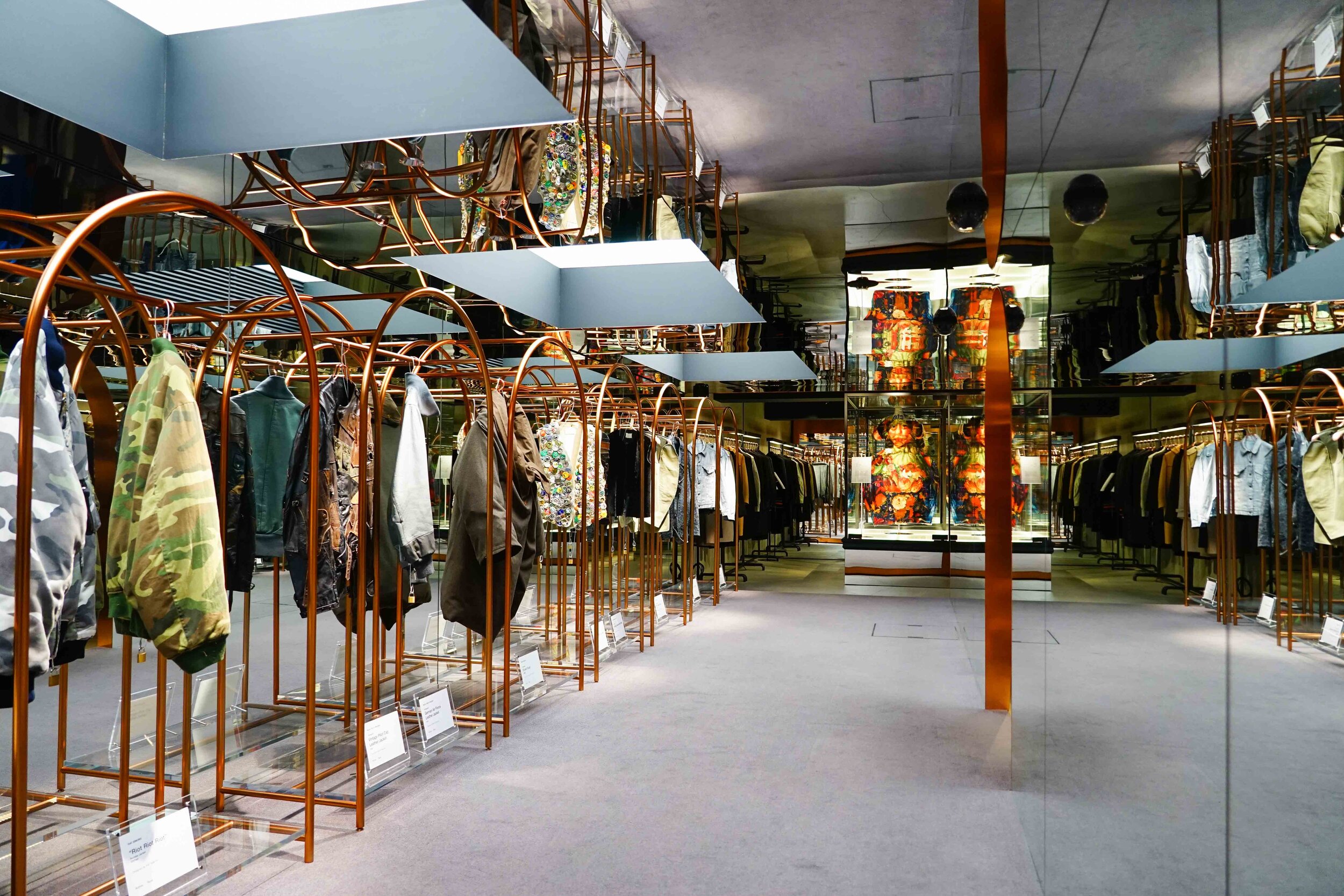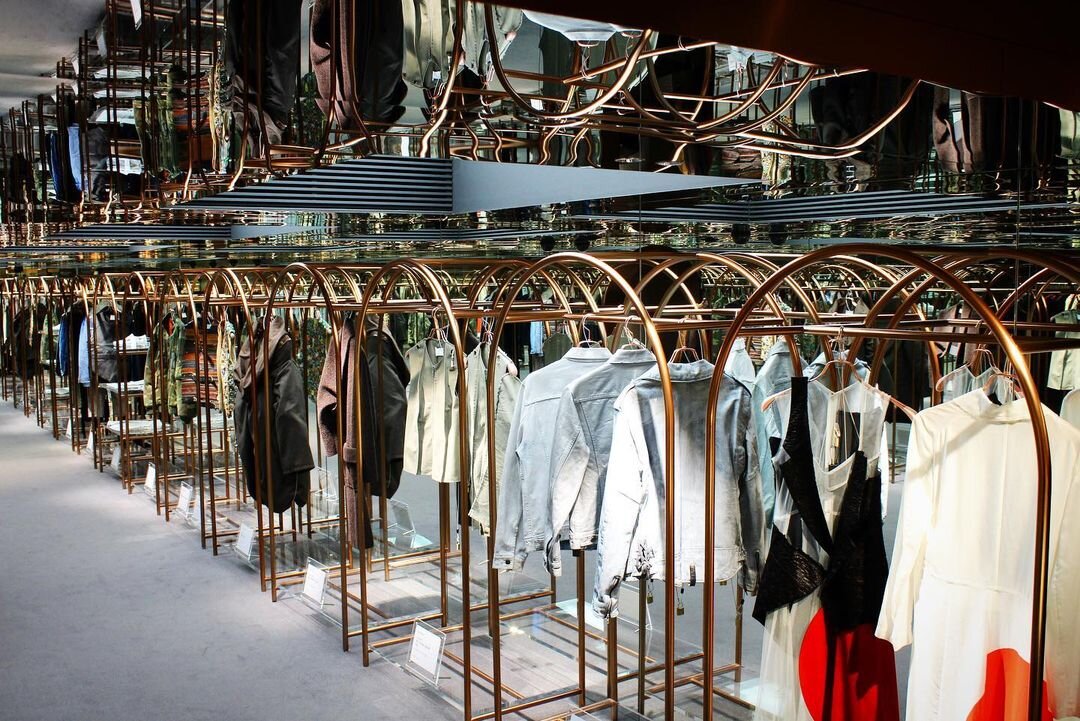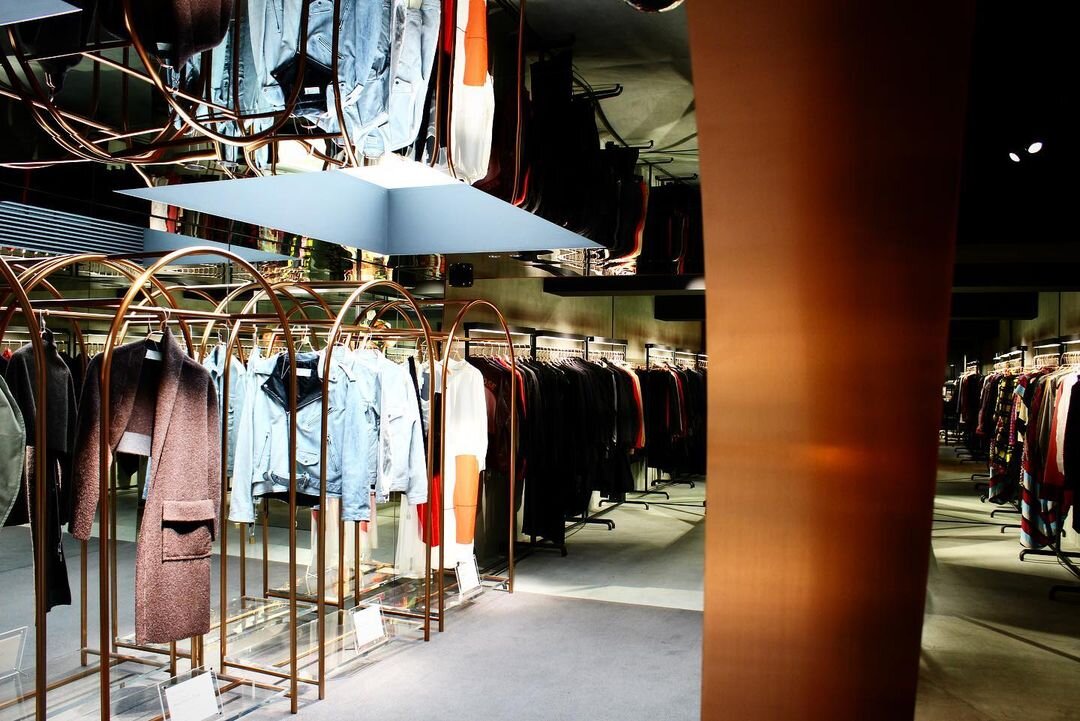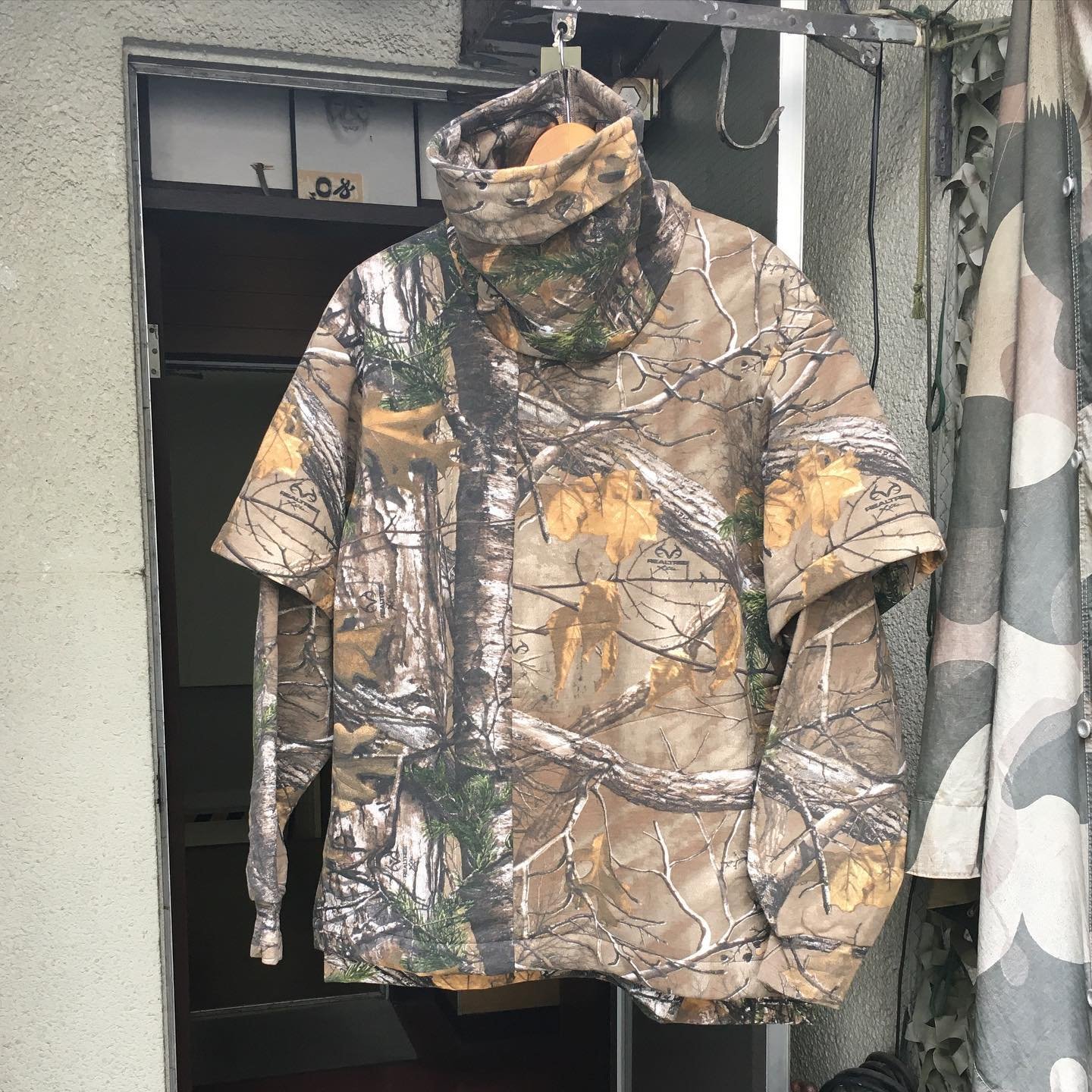INSIDE TOKYO'S ARCHIVE FASHION VAULT: MEET THE ARCHIVE STORE

In recent years, the rise of archive fashion has taken the industry by storm. It would be difficult to not stumble upon them on your Instagram feed and explore page. It is everywhere. From Raf Simons’s Riot bomber to Issey Miyake Sport’s IS varsity, we’ve seen it all. But we have to ask ourselves first, what is archive fashion? And what makes a piece archival?
Archive fashion are pieces that have a degree of significance in the respective fashion houses they were made in. They are deemed as revolutionary and innovative in aspects such as the type of textile they use to the graphics they incorporated. Think of archive fashion as a designer’s “greatest hits”. In its nature, these archive pieces are rare where prices have skyrocketed in recent years.
A handful of the most sought-after archive pieces are made by Japanese Avant-guard designers such as Rei Kawakubo, Yohji Yamamoto, and Jun Takahashi. It is no surprise then to see people walking around with these rare pieces in places like the Urahara area. Being in Japan gives you access to these archive pieces through websites such as Yahoo auction and Mercari. Though, it would still be a battle to get your hands on them due to the high demand.
However, all these pieces are scattered worldwide, fragmented and separated from its full collection. But what if there was a place that kept all these archive pieces in one place, like a museum containing all of the rarest pieces from the most sought-after collection of a designer’s career. A store tucked away from the main streets, in the undergrounds of Shibuya, packed with the best of the best. Margiela’s Artisanal line, Raf Simons Riot collection, Undercover Scab, you name it. The Archive Store has it all.
The Archive Store stocks an array of clothes ranging from the most coveted designers in the industry. Founded in 2018, the store aims to become a space where enthusiasts could interact and learn more about the history of selected pieces. They also frequently host ‘special’ exhibitions which showcase a specific designer’s work in a limited time-frame. If you ever visit the store, you will most likely be greeted by Tatsuyuki Suzuki, the manager and brain behind the Archive Store.
To fully understand the brilliance of the Archive Store, we sat down with the team for a brief interview.
Can you please introduce the team behind the Archive Store to the Sabukaru Network?
We are a designer archive fashion museum & store, started in March of 2018. Our team consists of our manager Suzuki, Sato, and Kiyota. The PR team at our headquarters is in charge of the press.
What is the story behind the store? When did you start and what was the initial idea behind it?
Right around when we started creating the concept of our store in 2015, the second hand market (used clothing market) started to focus more on the newest trends. This led to many masterpieces created by past designers to slowly disappear from the market. We thought we needed to create a space where the value of past archival art/fashion pieces, which create new trends, can be redefined. That is how this store started.
Your Archive has pieces that you can hardly even find on the internet yet you have it on display. Yet the store is one of Tokyo’s best-kept secrets. Is that an intentional strategy? Letting word of mouth slowly but surely build this cult-like status at this point?
If you travel down the road of fashion history, the pieces we display are at the goal. We designed our store in a difficult to find basement intentionally, so only those who reach the end of the road, the intellectual fashion enthusiasts can find it. Word spread among other enthusiasts, leading to the recognition we have achieved now.
The store draws a line between retail and an active archive and fashion museum. How do you define the purpose of the store?
We want to present and display archival pieces that changed fashion. That is why we also have a museum space, to show pieces as “Art Pieces”. We also carefully pick items to sell that capture the characteristics & feeling of each designer.
Are there any Dos and Don’ts when entering your store? Like can all cloths be tried on, is it allowed to take pictures, or to touch those pieces? How can someone make sure to follow the guidelines and stay respectful with your collection?
At Archive Store, we aim to bring archive pieces & customers closer than ever before. That being, you can touch, wear, and take pictures. However, archive pieces are very valuable & rare, so we ask you to handle each piece with care. (Pieces in the museum space cannot be tried on)
There are only a few brands that you dedicated the archive to/sell in your store. Could you please tell us about each choice and why these brands have such an essential role in fashion history and your archive?
At Archive Store, we display the works of designers who shaped and influenced today’s fashion scene.
Rei Kawakubo and Yohji Yamamoto are two designers that broke boundaries in the 80s. When elegant, dressy looks were the main wave, these two designers’ full-black collections became the center of attention. The silhouettes and materials used to make the boro clothing were very avant-garde, called the “boro-look”. The two designers’ controversial appearances into the fashion scene became known as “The Black Shock”. Their avant-garde, philosophical yet abstract approaches completely overturned traditional western-fashion and is a huge inspiration to many of today’s top designers.
Martin Margiela is an extremely creative designer who represents the 90s. Not just his clothes, but his show performances, the way he handled the press, the brand’s anonymity, everything was unique. He wasn’t just creating clothing; he was creating new concepts. Being one of the pioneers of artisanal fashion, he would deconstruct and reconstruct materials, objects, and used clothing, turning them into something new. His creative process has had a huge impact on many creatives and designers.
Raf Simons was also another important name in the 90s. He presented collections with themes of youth culture like music and art, presenting the concept of street in high fashion. His signature oversized, layering style is what began the luxury-street movement.
How did you build up this fantastic collection of pieces and are all of these pieces for sale?
To fully present our concept, we needed to create a “museum”. All our pieces on display have great historical value and are key when passing down knowledge. We believe that it is important to pay respect to the designer’s creations when collecting archive pieces. Through exhibitions and media, we are able to get offers from avid collectors who have been collecting from the debuts of these designers. We are thankful to the collectors who we have worked with in the past, we could not have made it this far without you guys. Regarding the store, not all archive pieces are for sale.
What are your most favourite current pieces of the archive?
Martin Margiela’s 1999 “Duvet Coat” is one of my favorite pieces. I think creating an art piece out of something like bedding really represents Margiela’s creativity well.
Are there any fashion periods that you value the most out of the designers you display and which generated the most amount of interest?
The 80s birthed many creative designers, but Archive Store is currently focused mainly on the evolution of late 90s to 2010 men’s fashion. Designers like Raf Simons and Hedi Slimane, who are known to interpret music into their collections, have heavily impacted todays street fashion. Both Raf Simons and Dior Homme’s AW 2001 especially stand out and are interesting to me.
If you could single out one garment you currently have on display which one would it be?
I would choose Martin Margiela’s Artisanal ⓪⑩ “Bottle Cap Leather Vest”, created in June of 2006. Martin is known to use daily materials when choosing materials for his works, but for this vest he used bottle caps, which are literally garbage, creating something nobody had made before. This piece is a very fitting example of a fashion archive piece that can be interpreted as an art piece.
What is your opinion on lines like Raf Simons Redux, have you noticed a change in demand? Is it devaluing the originals or is it shining a spotlight on remarkable pieces from the past?
Sharing the past with the present is an important thing. Presenting modern day enthusiasts with experiences and pieces of the past has great meaning. Personally, I believe that these lines give exposure to new users regarding important pieces and eras, ultimately raising the value of archive fashion.
What are the factors you’d consider when adding a new designer or label to your ever-expanding collection?
We are more interested in designers who are creating original concepts through silhouettes, sewing, and materials, rather than just design. We also focus on if they have a conceptual approach when presenting their views & values. 80s UK designers like John Galliano, Christopher Nemeth, Vivian Westwood, Judy Blame are some of the designers we are really focusing on right now.
Is there an emerging artist/label you would love to see on display in the near future?
YUIMA NAKAZATO. When I see his designs in videos, it makes me rethink the whole concept of clothing. I would like for you to try and think & feel what I felt. Blending state-of-the-art technology with Haute Couture and using techniques nobody ever has when making clothes, we believe YUIMA NAKAZATO is a world-class designer.
Can you please, tell us more about the interior design of the store? What was the idea, and who was the architect/designer behind it?
Hiroyuki Matsunaka of Design Room 702 did our store interior. From the inorganic concrete space, the copper plates that age beautifully, to the illusional mirror walls, our store is designed with the customer in mind. All the furniture & appliances are made-to-order as well. All of this leads to the very particular space that our store is today.
How do you feel about the way today’s young generation engages with fashion?
Fashion is a “motivation to life” when it comes to the young generation. Being able to share your thoughts in a community of like-minded people using social media is huge. It plays a major role when it comes to spreading & expanding fashion culture. Personally, rather than finding any “meaning” to clothing, I want people to wear clothes intuitively and have fun, without worrying about any rules. When your interest towards fashion deepens, sooner or later you will end up researching it’s history.
The demand for archive pieces has skyrocketed over the past decade or so. What are your thoughts about more people getting into archive fashion, and the customer base becoming wider?
We think it’s fantastic. Having an interest in both today and the past allows you to feel & understand the background and messages of pieces. With the customer base expanding, we want more and more people to see fashion history as a “study”, rather than just clothing. We believe our duty is to increase the number of users who enjoy the “academic research” of high fashion.
Where do you think fashion, archive fashion, and Archive Store will be in 10 years?
We think the polarization of clothing with “artistic value” and “minimal luxury” will accelerate. With many designers making the shift to haute couture, the demand for clothing with high artistic value continues to increase. Staying home will also become a new standard, and there will be more luxurious clothing that can be worn at home.
We also think that “clothing” will play a bigger role when it comes to visual & video arts.
The demand for archive fashion will continue to increase. Archive pieces are becoming harder and harder to collect, skyrocketing the rarity of each piece.
Regarding Archive Store, we think our role as an educational institution about fashion history will become clearer. Verbalizing fashion history to future users, and passing the culture down is our biggest mission.
Are there any current brands out there that you think will have similar archival status as brands you guys display right now?
When understanding archive pieces, there is a dilemma that exists, where the pieces and works were too difficult to understand at the time. Which means, archive pieces gain their true value after time has passed, and after the piece’s background and story get passed down. Works with strong thought and concept are meant to be passed down and understood over a long period of time. Personally, Jean Paul Gaultier’s recent haute couture works and Margiela by Galliano’s artisanal works make me think about the essential significance of clothing and fashion itself.
Thank you very much for your time!
Find the hidden entrance to the Archive Store at:
Archive Store
Jinnan 1−12−16 和光ビル B1F
Shibuya City
〒150-0041 Tokyo
Credits:
Text: Ihsan Raffi
Interview: Casey Omori, Adrian Bianco, Vuk Kahvedžić
Photography: Natsuki Ludwig













